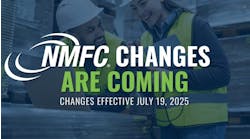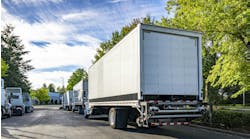The recent destructive hurricanes in Texas, Florida and Puerto Rico should put all of us on notice that we are not immune from the wrath of Mother Nature. Just looking at the video footage from these recent events should be enough to motivate us to take action when warnings are issued for an impending storm.
I lived in Texas during Andrew, Katrina and Rita and was in New York for Sandy. Through all those storms (knock on wood), I did not lose any equipment. And while I admit some of that was luck, another part of it was taking action to get trucks out of harm’s way.
Here are some do’s and don’ts I’ve used when weather warnings are issued:
- Don't ignore the warning — The sooner you begin the process of securing your assets, the better chance you have of saving them.
- Do fill the tanks — After a disaster, getting fuel can be a real problem. Filling your trucks’ tanks with fuel in advance of a storm means they will be operational following the storm when fuel may be scarce.
- Do move to higher ground — Take as many of your vehicles to higher ground as you can. Once you get them there, park them as close together as you can. If you park them in a solid grid, air can't get under them and they are less likely to be lifted up by strong winds.
- Don't dispatch trucks during a storm — As much as you may be tempted to squeeze in one last delivery, think about the fact that while you may be able to get the truck to the delivery site, you might not be able to get it back to safety following the delivery.
- Do ensure the safety of your drivers — Try to get your drivers back to their home base and assist them in getting fuel in their personal vehicles because once the storm passes if they don't already have fuel in their cars they may not be able to make it to work.
If current weather patterns are any indication, it seems likely that we have not seen the last of these storms with their 175 MPH winds.
And one more thing: the natural disaster might not be a hurricane. It could be that impending winter storm that will dump 18 feet of snow on you or one that will keep temperatures well below zero for days on end.
If you don't already have a plan in place for how you are going to protect your assets — both vehicles and human — now is a good time to develop one. If you wait until the next storm, it may be too late and it may be your truck on the evening news with the driver trying to climb out the window as water reaches the top of the cab.


